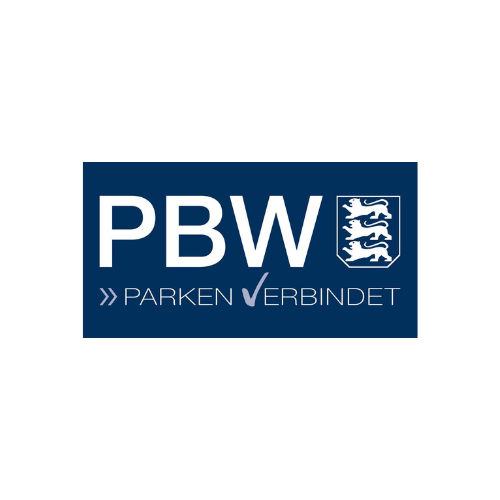Email marketing is an incredibly effective and accessible way of engaging customers and driving sales for any business. It has the strongest ROI of any marketing channel, returning $40 for every $1 invested. And it has an incredible reach, with 4.7 billion people — more than half of the world’s population — set to use email by 2026.
While most technologies get replaced over time, email has survived the technical and digital revolution mostly unscathed. It’s more popular than ever as a means of communication, with 347.3 billion emails sent every day in 2023, and it constantly adapts to changes in technology and buying habits.
The first ever email was sent in 1971 by Ray Tomlinson, a programmer working on MIT’s Arpanet project, the precursor of today’s Internet. In 1978, the inaugural email marketing campaign was launched to 400 recipients from Digital Equipment Corp. This pioneering marketing blast resulted in $13 million in sales, equivalent to about $78.8 million in today’s terms.
When the Internet went live in 1991, email was primarily used by universities and for corporate communications. It was out of reach for the general public. This all changed in 1996 when Hotmail launched the first free web-based email service. In one giant step, Hotmail opened a direct line of communication to a potential 20 million American Internet users. Marketers knew a good thing when they saw it, and they jumped in headfirst.
More than 30 years on from the birth of free, universal email access, email marketing is still evolving. In fact, it is stronger than ever and is being used alongside automation solutions and Big Data to deliver the right content to the right person at the right time. In 2023, it remains a powerful, affordable marketing tool across industries, requiring no specific technical skills or budget.
Since the advent of Big Data, marketers have been able to continually improve the quality of their email lists. Automation drives consistent, relevant, engaging campaigns that result boost revenue without requiring hours of work or coding knowledge.
Email and the airport
While email has long been a popular tool for online retailers to engage customers, many airports are not making the most of its potential. Email marketing may be widespread in the travel industry, but unless it’s combined with the right tools, it will fall short of customer expectation, leading to fewer sales, lost customers and decreased revenue.
When your airport uses an omnichannel platform that combines CRM (customer relationship management), business intelligence and email marketing capabilities, it becomes possible to track customer behaviour and to collect quality, relevant data that can generate a significant return on investment. Advanced analytics, industry expertise and user-friendly tools make it easy to turn good campaigns into great ones.
Let’s look at some best practices and technologies that can transform the emails your airport sends to its customers:
Top tips for first-class email marketing
1. Don’t keep them waiting
When you acquire a new email address — whether it’s through a sign-up during checkout, a Wi-Fi login in the terminal, or a mailing list subscription — use it quickly. Your campaign is more likely to succeed if you use the latest data to send a timely email to customers who recently interacted with your airport.
A sign-up is a great excuse to reward customers and a good opportunity for you to offer them something to kick-start their buying journey. A positive response can spark a chain of interactions and conversions that will make customers feel valued and drive sales.
Don’t worry if there’s no interaction after these initial emails, and don’t pester customers with too many follow-up campaigns. Email addresses that remain inactive can be contacted after a certain time in a re-engagement campaign.
If a subscriber still doesn’t respond, you can delete them from your database. Confirmed dormant users don’t do a list any favours, and eliminating them makes for cleaner, stronger data.
2. Send targeted messages
Targeting users is a technique that involves sending content that is relevant to individual customers. It’s a way of personalising campaigns to offer better value to the customer.
For airports, this might mean only distributing offers on family getaways to families rather than sending a blanket email to your business and single travellers too. Perhaps information about a new luxury product or service is appropriate for travellers who like to book premium products, but it wouldn’t interest someone who always buys the cheapest option.
Targeting is easy if the data your CRM system gathers is of sufficient quality. Passengers can be segmented based on a wide range of variables, including age, marital status, whether they travel for business or leisure, what their hobbies and interests are, and even buying and browsing history.
3. Embrace cart abandonment
Airlines had the second-highest cart abandonment rate across all industries in 2021, with a massive 88.87% of carts abandoned, but there’s no reason for airports to be complacent. Despite their gloomy figure, there’s really no need to despair when a customer leaves the checkout process uncompleted. There are many reasons why someone might abandon their basket, and emails can help to re-engage them.
For example, an email sent shortly after abandonment can allow a customer to pick up where they left off. If the abandonment happened simply because someone rang the doorbell or the customer had to leave for an appointment, you can help them get back on track. If there’s no response to the first email in your cart abandonment workflow, you can send a second message a day later with the same content to help the recipient resume their buying journey.
Customers who may have left their basket mid-purchase because they shopped around for a better deal can be tempted back with a discount or special offer. But be aware, many of the reasons for abandonment centre on unexpected costs at checkout or difficulty completing the purchase. Rezcomm’s integrated and intuitive customer interface offers clear visualisation of costs and a walk-through booking and payment process that simplifies the customer journey.
4. Think outside the box
Email marketing provides plenty of scope for creativity. Since around 2017, interactive emails with dynamic components, graphics and top-quality content have been commonplace. These emails take features that a user might expect to interact with on a landing page and bring that functionality to the inbox.
In 2023, the balance towards mobile is shifting even further, and consumers have spoken: 71.6% of users will delete an email immediately if it doesn’t display correctly on mobile, and 45% will unsubscribe from promotional emails for the same reason. A multi-device, responsive approach is the only way forward.
While interactivity was originally designed to entertain the reader, it’s more functional today and is used to promote engagement and keep consumers focused on the email. Trending interactive email elements for 2023 include:
- Animated buttons
- Animated calls-to-action
- ‘Rollover’ effects that showcase product offerings
- Accordion features that make long-form emails more compact
- Interactive product and image carousels controlled by the user
- Polls, surveys and user-generated interactive content
5. Think ahead
Keep up with the latest trends and always try to anticipate major changes. It’s crucial to meet customer expectations, whether that means improving personalisation or developments in email template design.
While it’s sometimes impossible to predict what the next big thing is going to be, a solution like Rezcomm is always improving, adapting and future-proofing in line with best practice across industries. This makes it possible to reach more passengers and make more sales. For example, Rezcomm’s easy-to-use drag-and-drop email editor makes it easier than ever to create stunning, responsive emails that are brand-matched with your airport.
6. Big Data personalisation is here to stay
The basic equation for successful email marketing is communicating the right message to the right person at the right time. Personalisation often drives much of the content.
In the last decade, the advent of Big Data has led to brands focusing on integrating data across channels, translating information into actionable signals for email marketers. Ecommerce CRM software like Rezcomm allows marketers to analyse and segment customer data, storing unprecedented amounts of information in one place to develop holistic customer profiles. Sophisticated personalisation is no longer an option: it’s essential.
7. Video in email
Social media sites like Facebook and Instagram have long been exploiting the shareable, engaging medium of video. Since October 2016 when Apple embedded HTML video support in its iOS 10, it has also been a catalyst in making email marketers and users more receptive to other forms of interactivity.
Besides, video in email is fun — it appeals to subscribers and communicates your airport’s message and brand in a clear, attractive way.
8. Automated and triggered emails
The last decade has seen major advancements in email automation, and the next decade could change the use of the channel for good.
Brands that use triggered messages generate a lot of revenue from email marketing. Automated emails generally offer a very high ROI because of factors such as business intelligence making for a more streamlined system. For instance, automated emails have a 300% higher click-through-rate than promotional emails and a 33.8% open rate (vs 14.7% for promotional emails).
In 2023, email has become further integrated into the full marketing stack. Cloud based CRM services have so much access to data and analytics that automation is now ruled by cross-channel optimisation and machine learning. The automation of customer lifecycle and workflows will only increase.
Smarter automated segmentation will continue to lead to increased performance, customisation and accessibility. Automated marketing reports will further increase ROI in an already profitable channel. This can only mean a better digital experience for customers and airports alike.
9. Stay safe
2016 was the year that really flagged up the importance of encryption as Yahoo revealed that 1 billion of its user accounts had been hacked. More recently, email marketing service providers have also been targets of hacks. As emails get more personalised with information from various sources, the need for privacy and online security has increased.
Remember that email and data security is a priority for your airport’s customers, and that any breach will negatively impact brand trust and may land you a hefty fine for breaking data law.
Rezcomm partners with airports worldwide. If you want to know more about how our integrated ominchannel solutions can help support your email marketing campaigns and customer relationships contact us for a chat today.




























